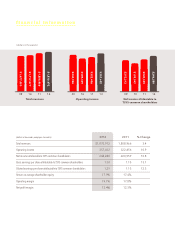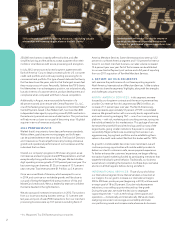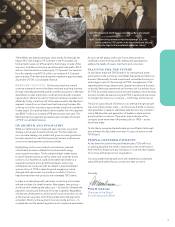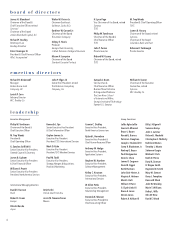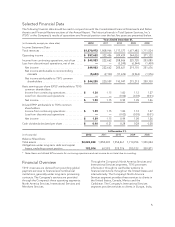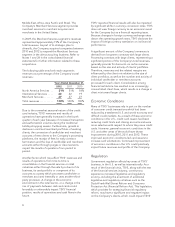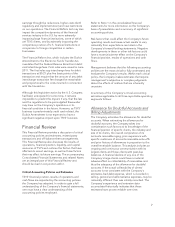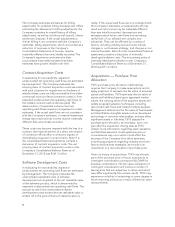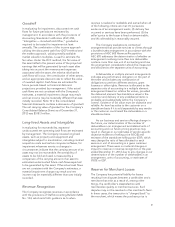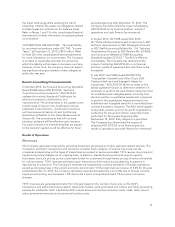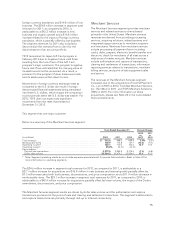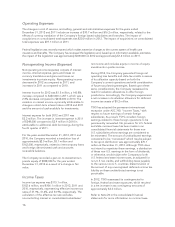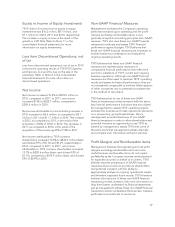NetSpend 2012 Annual Report Download - page 11
Download and view the complete annual report
Please find page 11 of the 2012 NetSpend annual report below. You can navigate through the pages in the report by either clicking on the pages listed below, or by using the keyword search tool below to find specific information within the annual report.The Company estimates allowances for billing
adjustments for potential billing discrepancies. When
estimating the allowance for billing adjustments, the
Company considers its overall history of billing
adjustments, as well as its history with specific clients
and known disputes. If the actual adjustments to
clients’ billing is not consistent with the Company’s
estimates, billing adjustments, which is recorded as a
reduction of revenues in the Company’s
Consolidated Statements of Income, may be
materially different than was initially recorded. The
Company’s experience and extensive data
accumulated historically indicates that these
estimates have proven reliable over time.
Contract Acquisition Costs
In evaluating for recoverability, expected
undiscounted net operating cash flows are estimated
by management. The Company evaluates the
carrying value of contract acquisition costs associated
with each customer for impairment on the basis of
whether these costs are fully recoverable from either
contractual minimum fees (conversion costs) or from
expected undiscounted net operating cash flows of
the related contract (cash incentives paid). The
determination of expected undiscounted net
operating cash flows requires management to make
estimates. If the actual cash flows are not consistent
with the Company’s estimates, a material impairment
charge may result and net income may be materially
different than was initially recorded.
These costs may become impaired with the loss of a
contract, the financial decline of a client, termination
of conversion efforts after a contract is signed, or
diminished prospects for current clients. Note 9 in
the consolidated financial statements contains a
discussion of contract acquisition costs. The net
carrying value of contract acquisition costs on the
Company’s Consolidated Balance Sheet as of
December 31, 2012 was $161.3 million.
Software Development Costs
In evaluating for recoverability, expected
undiscounted net operating cash flows are estimated
by management. The Company evaluates the
unamortized capitalized costs of software
development as compared to the net realizable value
of the software product, which is determined by
expected undiscounted net operating cash flows. The
amount by which the unamortized software
development costs exceed the net realizable value is
written off in the period that such determination is
made. If the actual cash flows are not consistent with
the Company’s estimates, a material write-off may
result and net income may be materially different
than was initially recorded. Assumptions and
estimates about future cash flows and remaining
useful lives of our software are complex and
subjective. They can be affected by a variety of
factors, including industry and economic trends,
changes in our business strategy, and changes in our
internal forecasts. Note 8 in the consolidated financial
statements contains a discussion of internally
developed software costs. The net carrying value of
internally developed software on the Company’s
Consolidated Balance Sheet as of December 31,
2012 was $71.6 million.
Acquisitions — Purchase Price
Allocation
TSYS’ purchase price allocation methodology
requires the Company to make assumptions and to
apply judgment to estimate the fair value of acquired
assets and liabilities. TSYS estimates the fair value of
assets and liabilities based upon appraised market
values, the carrying value of the acquired assets and
widely accepted valuation techniques, including
discounted cash flows and market multiple analyses.
Management determines the fair value of fixed assets
and identifiable intangible assets such as developed
technology or customer relationships, and any other
significant assets or liabilities. TSYS adjusts the
purchase price allocation, as necessary, up to one
year after the acquisition closing date as TSYS
obtains more information regarding asset valuations
and liabilities assumed. Unanticipated events or
circumstances may occur which could affect the
accuracy of the Company’s fair value estimates,
including assumptions regarding industry economic
factors and business strategies, and result in an
impairment or a new allocation of purchase price.
Given its history of acquisitions, TSYS may allocate
part of the purchase price of future acquisitions to
contingent consideration as required by GAAP for
business combinations. The fair value calculation of
contingent consideration will involve a number of
assumptions that are subjective in nature and which
may differ significantly from actual results. TSYS may
experience volatility in its earnings to some degree in
future reporting periods as a result of these fair value
measurements.
8



